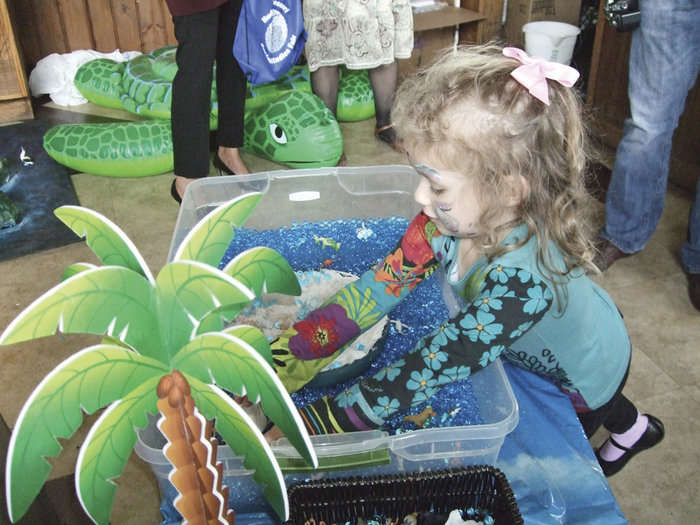When Gracy Jolly started Hudson Montessori in 2009, she said she didn’t want the school’s students to learn about history, geography, math, science, and English in isolation of one another.
“I wanted everything to be interconnected,” she said. “I wanted the children to learn how everything relates to each other.”
Thus, it is typical for the students – who are toddlers, kindergarteners, and first and second graders – to learn the map of the world with the help of color, or geometry with the aid of photos of architectural structures.
Each school year Jolly and her staff select a theme for the curriculum that serves as a thread that connects all their learning for that academic term. And each spring this theme culminates in an annual social studies fair that allows the students to experience all that they’ve learned in an interactive, hands-on museum environment.
One year the academic theme was the continents of the world. The next year the theme was harvest festivals of the world. Last year the students learned about the Americas. This year they are learning about the “silk route,” also known as the “silk road,” the trade routes that eventually connected China, India, Europe, Persia, and parts of the Arab world. The silk road is credited with spreading civilization.
Each spring, the school’s academic theme culminates in an annual social studies fair.
____________
Parents are currently planning how they want to organize the silk road exhibit for this year’s social studies fair. But Natasha Kalenchits, whose 5-year-old daughter Eva has attended Hudson Montessori since the school opened, explained how parents structured the fair in 2012, which focused on the Americas.
“When they entered, they came in through the North Pole, so there was a [mock] igloo and ‘polar bears,’ ” explained Kalenchits. “Then they moved on to Canada and we had interactive exhibition booths that had to do with Canada. Next was the United States, and so on.”
The exhibit’s “polar bears” were constructed by the school’s toddlers and were made out of cotton balls there were glued together.
(According to a school newsletter from last year, the “igloo” was made out of approximately 476 empty milk cartons that were held together with about seven pounds of hot glue. The full model, which was six feet high and eight feet in diameter, was too big to be included in the fair and ultimately had to be taken apart to fit into Zeppelin Hall.)
An exhibition booth dedicated to Mexico included a model of the Chichen Itza, a pre-Colombian city built by the Mayans. The city was in the shape of a pyramid. Pointing to a beaded pyramid in one of the classrooms that is comprised of several squares stacked on top of each other, Jolly said, “You can see, it’s just squares of twos, squares of threes, squares of fours.”
The pyramid and color-coded squares, Kalenchits added, are now being used in the students’ math classes, as is the model Chichen Itza from last year’s social studies fair.
The final booth in the 2012 social studies fair was the South Pole, which was represented with toy penguins, among other items.
“As a parent, I really learn a lot myself,” said Kalenchits. “There’s a lot I didn’t know until I started working on these social studies fairs. My daughter already knows the map of the United States because she knows [the states] by their shapes and she almost doesn’t need any help identifying each state. I can’t do that, and she’s only 5.”
The 2013 social studies fair will take place on May 4. Last year, more than 250 people attended the fair, up from 35 attendees when Hudson Montessori launched its first social studies fair in 2010.
“One important aspect of the fair is that it brings a spirit of closeness and togetherness among our parents, many of whom did not know each other until they came together to work on this project for the children,” Jolly said.
E-mail E. Assata Wright at awright@hudsonreporter.com.
